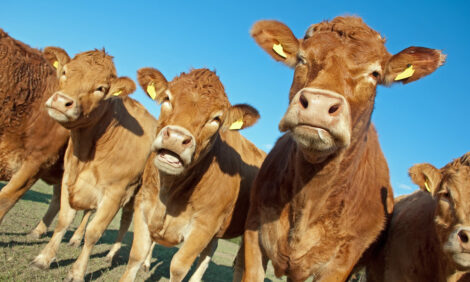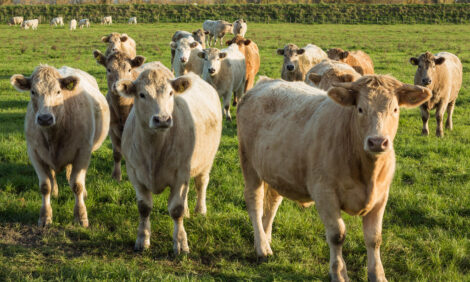



USGC: US DDGS More Than Just Livestock Feed
US - From a fish farm in Vietnam to a pet shop in Mexico, US distiller’s dried grains with solubles (DDGS), a co-product of U.S. ethanol production, has been making inroads into non-traditional feed markets such as aquaculture (fish farming), while showing potential in others sectors like pet food.The U.S. Grains Council has been active in researching how DDGS can be used in non-livestock feed rations through the various feeding trials it has conducted throughout the world. While the use of DDGS in both aquaculture feed and pet food is currently in the research phase, studies have shown that the co-product has the potential to serve as a healthy, reasonably priced feed ingredient. In Southeast Asia, aquaculture is the region’s fastest growing demand sector for feed grains. Indonesia and Vietnam are already using DDGS in aquaculture diets. Total aquaculture production for the region is estimated to reach 9 million metric tons as the export demand continues to increase.
According to Adel Yusupov, USGC regional director in Southeast Asia, most modern fisheries in the region use two types of compound feed for commercial production: sinking or floating. DDGS can be used in both forms at inclusion rates of 5-7 percent. One issue the Council has been working to address is the impact increased DDGS inclusion rates have on meat color. “There is one factor that discourages higher inclusion rates of DDGS and that is the aquaculture industry’s perception that DDGS, when used at a rate higher than 10-15 percent, could affect meat color,” Yusupov said. “Since the industry in Southeast Asia is geared toward exports, there is a preference for white to pale yellow meat.”
Yusupov said the Council has been engaged in DDGS feeding trials within the region with the aim to further explore this issue. In August, the Council signed a Memorandum of Understanding with Vihn Hoan Company in Vietnam to conduct a DDGS feeding trial with catfish, coinciding with plans to develop an aquaculture demonstration farm on the company’s premises. The feeding trial is currently underway, due for completion in December, and Vihn Hoan Company is in the process of building two ponds for the demonstration farm.
“We are optimistic that DDGS can be used up to 15 percent in catfi sh diets, however, this needs to be scientifically proven for the industry to accept that,” Yusupov said. DDGS used in aquaculture is also showing promise in Egypt’s market. Fish consumption in the country is approximately 13 kilograms per capita, with aquaculture producing 61 percent of that number. Tilapia, catfish and mullet are the most commonly cultured fish in Egypt.
According to USGC Director in Egypt Dr. Hussein Soliman, the country’s aquaculture production number is expected to double in the next 5 to 10 years. For now, Egypt’s aquaculture industry uses about 5,000 tons of U.S. DDGS at an inclusion rate of 3-5 percent. The Council’s intention for the next few years is to increase the DDGS inclusion rate up to 10 percent in Egypt’s feed rations. “Since Egyptian fi sh farmers started using DDGS two years ago, feed costs have been reduced by 2 percent,” he said. “As long as the price of DDGS is cost-efficient, the ingredient will be well received here. If the price of DDGS becomes 105 or 110 percent of that of corn, I believe DDGS usage in Egypt will increase from its current amount of 53,000 tons to 100,000 tons in a very short period of time.”
On the other side of the world, Mexico has also been exploring the possibility of including DDGS into non-livestock diets, particularly pet food. “We think there is great potential for DDGS to be used in Mexico’s pet food industry, however, sector representatives have requested more information on the feed ingredient as the pet food market is demanding and sensitive,” said Julio Hernandez, USGC director in Mexico. “Still, with the pet food and pet care industry expected to grow, driven mainly by marketing campaigns and pet owners’ awareness about the benefits of providing a balanced diet for their pets, there is an opportunity for DDGS to make inroads into this market.” Mexico is already a huge importer of U.S. DDGS and the United States’ top importer, having purchased more than 800,000 tons in 2007 with exports expected to increase by more than 350 percent within the next fi ve years.
Such growth, combined with the evolving pet food industry, could mean a new market for DDGS. “Pet feed manufacturers are segmenting the market and there could be a niche for DDGS in pet food diets, especially for older dogs,” Hernandez said, noting a study which suggests diets for more mature dogs could include up to 25 percent DDGS in order to achieve good intestinal health. Currently, Mexico’s pet food and aquaculture sectors consume only 3-11 percent of the country’s DDGS, but with stronger promotional efforts and more information on the co-product, that number may rise. In the meantime, the Council will continue to promote U.S. DDGS in Mexico and provide additional information on its use in non-traditional feed ingredients. “There are opportunities for DDGS in Mexico’s pet food market if the product can effectively meet quality expectations,” Hernandez said. “By promoting it in seminars and organizing visits from suppliers, as well as using the internet to reach potential buyers, this could turn into a big market.”
TheCattleSite News Desk


